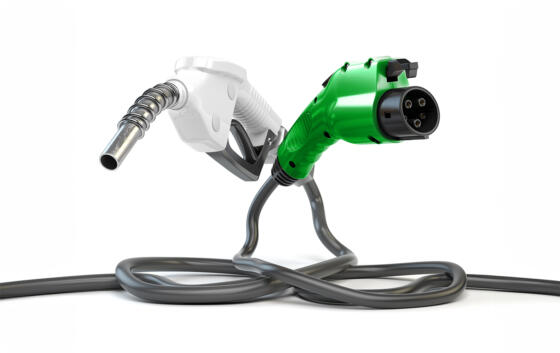What will the car of the future consist of?
Nanotechnology
Welcome to the world of minute matter. At a level below roughly 50 nanometers (50 billionths of one meter/1.9685039370079E-6 inches) classic laws of physics no longer apply. Instead, substances behave according to laws of quantum physics and can develop different optical, magnetic or electric characteristics such as reflecting light instead of being translucent. Arguably the best-known nano application is the lotus effect. Emulating the lotus leaf, it causes liquids to bead and roll off surfaces that have been treated with specific coatings. Hyundai’s Vice President Hong Seung-Hyun considers the technology a “crucial key in leading the transformation of the mobility industry,” according to the Korea Times. Before the year is out, the Hyundai Group, which also includes the Kia brand, is planning to introduce a polymer in its vehicle models that encapsulates oil and releases it in case of excessive friction. In 2026, a self-healing polymer-based protective coating for sensitive LiDAR and camera sensors of advanced driver assistance systems that automatically causes scratches to disappear at room temperature is supposed to follow. Also based on that type of polymer nanotechnology are self-healing paint protection coatings that have been investigated by researchers for several years, albeit without market-penetrating success so far. Using nanotechnology, Hyundai is also planning to make solar cells transparent and flexible. As a result, they could be applied to car windows and body surfaces. The aim is to achieve 20 to 40 kilometers (12 to 25 miles) of range with a one-day light harvest.
Recycled plastics
The pursuit of lightweight design causes the content of plastic components in cars that with a density of roughly 1g/cm3 (0.03 oz/cubic inch) are eight times lighter than steel to continually grow. But can the versatile material also be sustainable? Yes, it can – provided it doesn’t end up in a waste incineration plant but is recycled. The major problem is that due to the typically inhomogeneous recyclable materials, recycled plastics are almost always inferior plastics. That’s exactly the challenge that many process engineers are tackling. German film and plastics supplier Südpack, for instance, is investing in so-called Carboliq technology. In a chemical process, it converts mixed and contaminated plastics under atmospheric pressure and relatively low process temperatures of less than 400 °C (752 °F) into a liquid resource from which new plastic materials can be produced. This recycling method even enables upcycling of inferior into high-performance plastics.
Biocomposites
As early as in 1941, Henry Ford presented a car with a hemp-fiber-reinforced composite body. It’s assumed that steel and oil giants prevented the idea from catching on to protect their interests. However, the automotive industry’s pursuit of greater sustainability and the design of cars with lighter weight made biocomposites from quickly renewable raw materials like cellulose, bamboo, hemp or corn popular again. The interiors of production cars have been “greening” for several years (see next spread) but ideas for exteriors are mushrooming as well. In 2013, Toyota presented the ME.WE concept car in which horizontal surfaces such as the floor pan, engine hood and roof consist of a bamboo laminate. An electric car recently presented by a mechanical engineering university in India even consists mainly of bamboo. That’s possible because composite materials made of natural fibers have very good strength despite their low weight. Even Henry Ford in his day announced that his hemp car body was ten times more impact-resistant than an equivalent steel version. New materials, new players? Possibly. In 2019, Oji, a Japanese paper corporation, presented a sports car concept with a cellulose nanofiber body featuring sharp edges and boasting a weight advantage of 150 kilograms (331 lbs.). To save weight, Citroën provided its concept car Oli with a cardboard hood and roof. Producing paper instead of stamping steel? Besides saving weight that could reduce CO₂ emission by 20 to 50 percent just on the factory floor. With natural resins for curing the fiber mats a potential recycling problem could be resolved as well. Currently, the fact that their manufacturing costs are not competitive yet is the biggest disadvantage of biocomposites.
Polycarbonate windows
Lightweight design is an important advantage in motorsport even more so than in the case of production cars. That’s why polycarbonate (PC) windows have been standard components in racing for a long time. PC is not as scratch-resistant as glass but 50 percent lighter, plus it lends itself well to forming and dyeing, which enables ample freedom of design. Automakers are already using PC glass for rear and side windows as well as for panoramic sunroofs and headlights. Their next development objective is windshields, which are particularly challenging in terms of break and scratch resistance.
Steel vs. lightweight metals
Around 50 to 60 percent of a modern car consists of conventional steel but the unbroken weight reduction trend in the automotive industry puts pressure on steel suppliers. They’re responding with ultra-high-strength and thus very thin-walled grades of steel, sandwich composite solutions with plastics or high-strength hot-formed steel for safety-relevant structural components. Using those materials can save up to one third of weight compared to classic steel designs. The advantages of steel over lightweight components made of aluminum or carbon are low costs, lower energy input in steel production and very good recyclability. For two decades, magnesium, one of the ten most frequently found materials on Earth, has been brought into play as a low-cost ultra-lightweight material (75 % lighter than steel) in the automotive sector. The metal is already being used in many areas of automotive engineering, primarily as cast parts for instance in transmission housings but also as die-cast parts in A and B pillars or in floor panel elements, etc. In 2015, the Helmholtz Institute even announced that the car of the future will be made of magnesium. Researchers there and elsewhere are working on improving the unfavorable material characteristics of magnesium (susceptibility to corrosion, disadvantages in terms of formability and strength) to make it feasible also for use in large body parts. However, besides the combination of the individual elements, the manufacturing process such as process temperature or speed of rolling out the sheets is decisive for an optimal result, according to the Helmholtz Institute. Supplier ThyssenKrupp names two other benefits of magnesium: even in painted condition, magnesium is 100 percent recyclable with a surface featuring a sophisticated look.
Textile 3D printing
Weaving looms are a thing of the past – textile 3D printing enables the creation of all-new versions of fabric and turns highly individual customer wishes into reality. The 3D printer from Stratasys, for instance, can apply up to seven different materials to the base material simultaneously.
Upcycling
Whether old fishing nets or shredded PET bottles: More and more automakers are improving plastic waste to create textiles for covering seats, lining interior surfaces or weaving carpets. Carmaker Volvo, for instance, is planning to produce one fourth of the synthetic materials installed in its models from recycled plastics starting in 2025. Italian synthetic fiber manufacturer Aquafil has calculated that the use of 10,000 metric tons (11,000 short tons) of “Econyl,” an upcycled nylon, saves 70,000 barrels of crude oil and avoids 65,100 metric tons (72,000 short tons) of carbon dioxide (CO₂) equivalent. In view of some 1.5 million metric tons (1.6 million short tons) of textile materials per year being installed in passenger cars worldwide, there’s huge sustainability potential to be tapped just by using the upcycled nylon.
Biomaterials
Automotive interiors generally require plastic materials if for no other reason than stability. However, the notion that those materials don’t need to be pure plastics is gaining traction. Designers are experimenting with biomaterials for interior uses in even more creative ways than on exteriors. Whether tomato skins, coffee grounds or coconut husks, the plastics content in cabins can be reduced by adding natural materials.
Vegan and vegetarian
People that don’t like meat on their plates don’t like to sit on animal skins in cars either. Automakers are still some of the major users of leather in the world but as in other areas there’s a transformation process under way in this case, and it has long ceased to be focused solely on animal welfare. Turning animal skin into leather not only requires huge amounts of water but around 130 chemicals including highly toxic cyanide, according to animal rights organization PETA. However, using classic artificial leather is only a partially viable option because – aside from functional weaknesses such as lack of breathability – it’s produced from latex- or petroleum-based sources. Scoby Tec in Leipzig cultivates a visually and haptically attractive, comfortable, tear-resistant and breathable leather alternative in the laboratory using bacterial cellulose. What’s more, the vegan “skin” is sustainable. Whereas 7,550 liters (2,000 gallons) of water and 4,800 kilograms (10,600 lbs.) of fodder are consumed per one square meter of cowskin, the derivative from the lab only requires 60 liters (15.8 gallons) and six kilograms (13.2 lbs.) of nutrient mass, according to Scoby Tec. Several automakers have already inquired about the leather substitute.
Rattan
On some of its models, Chinese electric carmaker NIO has replaced parts of the plastic in the cabin with a patented material called karuun that consists of rattan. Together with karuun’s developers, Indian automotive supplier Motherson that specializes in plastic materials has already implemented smart, interactive user surfaces.



